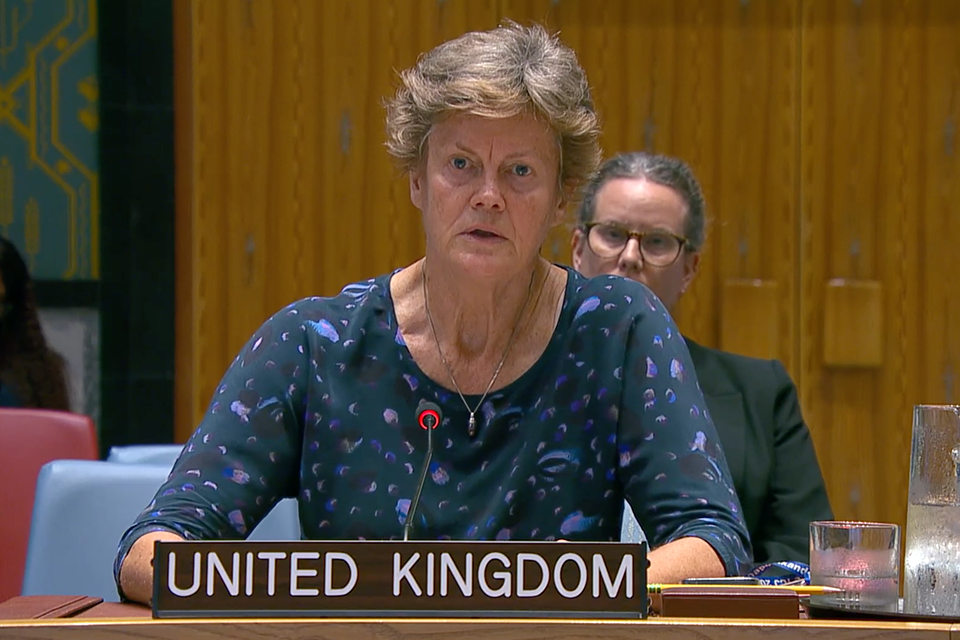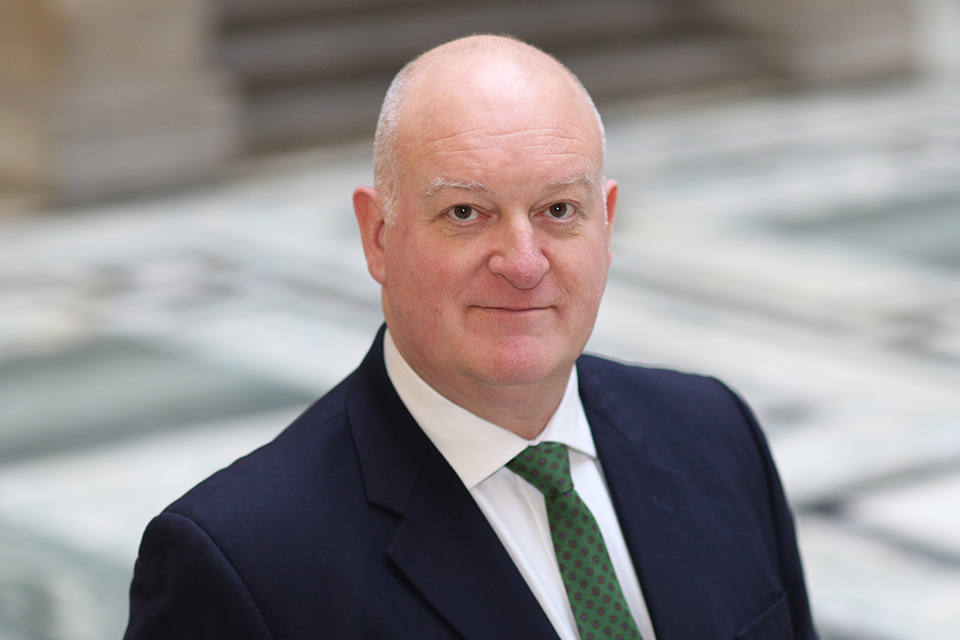Political content has been removed from this transcript.
Good afternoon, everyone.
We are here today to talk about the situation in our prisons.
When I took office, nearly a year ago, I inherited prisons on the brink of collapse.
Despite the immediate measures we took to avert disaster, this crisis has not gone away.
David Gauke will soon publish his sentencing review.
It will set out how we end this cycle of crisis once and for all.
But today, I will talk about the situation that we face now…
And further measures that we must take to stabilise the prison population.
To do so, I would first like to turn to Amy Rees.
Until recently, Amy was Chief Executive of His Majesty’s Prison and Probation Service – having started out, 24 years ago, as a Prison Officer on the wings.
Now the Department’s interim Permanent Secretary, Amy will set out the scale of the challenge we face today.
[AMY REES]
Thank you, Lord Chancellor.
The total prison population is 88,087 – and the adult male estate is operating at approximately 99 percent of its capacity.
Every year, on our current trajectory, the prison population rises by 3,000.
And we now expect to hit zero capacity – to entirely run out of prison places for adult men – in November of this year.
The population has been rising, rapidly, for many years.
In 1993, the population was less than half its current level – at around 40,000 prisoners.
When I first joined the Service, in 2001, it was 65,000.
In recent years, it has accelerated rapidly to its current levels, and is forecast to be more than 100,000 by 2029.
The primary cause of this is clear.
Sentence lengths have increased considerably.
In 2005, the average custodial sentence was 13 months.
By 2023, it was 21 months – a 66 percent increase.
We now have a larger population of sentenced prisoners in our prisons – serving longer sentences than they used to.
While this is the primary cause, it is not the only cause.
The number of offenders brought back to prison after being released – known as recall – is a significant, though lesser, contributing factor.
In 1993, this ‘recalled’ population in prison was virtually non-existent at just 100 prisoners.
By 2018, it was 6,000.
And since then, levels have soared – more than doubling to 13,600 in March this year.
Until now, successive governments have attempted to manage prison capacity primarily by carrying out early releases.
In late 2023, the prison system was running at around 99 percent of its capacity.
Faced with the prospect of running out of prison places altogether, the End of Custody Supervised Licence Scheme was introduced in October 2023.
This meant eligible prisoners were automatically released up to 18 days before their scheduled released date, later increased to 35 days and then up to 70 days in May 2024.
This measure prevented prisons from running out of places entirely, but it only bought the service time.
By July last year, prisons were again operating close to maximum capacity.
Ministers announced plans for some prisoners serving standard determinate sentences to be released automatically at the 40 percent point of their sentence, rather than 50 percent.
A surge of these releases took place over two tranches in the autumn and again prevented prisons from filling up entirely.
In parallel, we have brought in other smaller-scale measures to manage capacity.
This includes moving some risk-assessed offenders out of prison and onto Home Detention – tagged and curfewed for a longer period.
These measures are important, but they do not address the scale of the challenge we face.
As I have said, the prison population is rising by around 3,000 a year – the equivalent of two large prisons every single year.
Even with these measures in place, we will run out of places in just five months’ time.
Let me return to my first slide on the growth of the prison population to explain what that means in practice.
The operational reality of running prisons so close to their maximum capacity is that it creates a set of interconnected and escalating problems.
Even before you run out entirely, our prisons become more dangerous places.
With limited space, it becomes harder to manage prisons, and the challenges of violence and drugs grow.
This makes prisons less safe, and it leaves staff with less time to get prisoners to work and education – vital to ensuring that they leave prison less likely to reoffend.
We are already reliant on a small number of police cells in some parts of the country, where we hold offenders temporarily.
If capacity gets even tighter, as an exceptional measure we would activate ‘Operation Early Dawn’.
This means we convene a team at 0530 am every day to track each individual potentially coming into custody, so that we can make sure there will be a space available for them.
Early Dawn was activated between 19 August to 9 September 2024, prior to the implementation of early releases.
It was also previously activated in October 2023, March 2024, and May 2024.
In recent weeks, we have come close to activating Early Dawn once again.
If Operation Early Dawn is unable to manage the flow of prisoners, the situation becomes intolerable.
We would, at this stage, see the managed breakdown of the criminal justice system.
Police holding cells would be full, and the police would be faced with being unable to make arrests.
Courts would need to consider bail for offenders they would normally consider dangerous enough to remand to prison.
If the system reaches that point, there would be a clear risk to public safety and the only solution would be rapid emergency releases.
This would mean offenders being let out of prison without time for probation officers and other services to put in place release plans designed to protect the public.
And even this would only buy us time.
The prison population will keep rising.
Without a long-term plan, sooner or later we would run out of places once more.
That is the situation in the prison service as it stands today.
And I’m now going to hand back to the Lord Chancellor to talk about the path forward from here.
[LORD CHANCELLOR]
This Government will end the cycle of crisis.
We will bring order and control back to our prisons.
That starts by building more of them.
Last December, we published a long-term building strategy, setting out our aim to open up 14,000 prison places by 2031.
This is the largest expansion of the prison estate since the Victorians.
And we are not wasting time.
We have already committed £2.3 billion to prison expansion.
And since taking office, we have delivered 2,400 new places.
We will now go further.
While the spending review is ongoing, I can announce today that the Treasury will fund our prison expansion plans, in full, across the spending review period.
This is a total capital investment of £4.7bn.
It allows us to start building three new prisons…
Including breaking ground on a site near HMP Gartree later this year.
This investment will also fund new cells at existing prisons…
With new houseblocks and rapid deployment cells opened across the country.
This is a record prison expansion.
We are building at breakneck pace.
But we must be honest.
Prison building is necessary…
But it is not sufficient.
We cannot build our way out of this crisis.
Despite record prison building, the population is simply rising too fast.
By Spring 2028, even with the funding I have announced today, we will be 9,500 places short.
The conclusion is clear
We have to do things differently.
In October, I appointed David Gauke to lead an independent review of sentencing.
He has been ably supported by a panel that draws together expertise from across the criminal justice system.
I cannot and will not get ahead of their recommendations.
But let me be clear about the task that they have been set.
The sentencing review must ensure there is always space in prison for dangerous offenders.
To achieve this, the panel will have to recommend a reduction in the length of some custodial sentences…
And an expansion of punishment outside prison, for those offenders who can be managed in the community.
At the same time, I have set David a clear condition
We must protect the public in whatever measures we pursue.
Too often today, our prisons do the opposite.
They create better criminals and not better citizens…
With 80% of offenders now reoffenders.
Across the world, there are models that we can learn from.
David and I both visited Texas earlier this year.
There, offenders who comply with a strict regime earn an earlier release…
While those who behave badly are locked up for longer.
Crime there is now at a 50-year low, reoffending is down, and the prison population is under control.
Meanwhile, technology – both existing and emerging – clearly has the potential to transform community punishment.
A study published last week shows our radio frequency tagging is cutting reoffending by around 20 percent.
And emerging technology presents us with further opportunities.
We are entering a world where tech has the potential to impose a digital prison outside of prison, surveilling offenders even more closely than they can be watched in jail.
To make our streets safer, we must seize on these opportunities.
While the Sentencing Review offers us our path to ending the capacity crisis in our prisons, for good, it will take time to take effect.
The impact of sentencing reforms will not be felt before Spring next year.
On our current trajectory, hitting zero capacity in November, we simply do not have that time.
There will be no return to the releases we saw late last year.
But I have always been clear that, if further measures are required, I am willing to take them.
Today, I am announcing a measure that will target the recall population, which has more than doubled in seven years.
We will bring legislation in the coming weeks that means those serving sentences of between one and four years can only be returned to prison for a fixed, 28-day period.
Some offenders will be excluded from this measure…
Including any offender who has been recalled for committing a serious further offence.
We also exclude those who are subject to higher levels of risk management by multiple agencies, where the police, prisons and probation services work together.
This measure builds on previous legislation introduced by the last Government, who mandated 14-day recalls for those serving sentences of under a year.
And, crucially, it buys us the time we need to introduce the sentencing reforms that – alongside our record prison building plans – will end the crisis in our prisons for good.
The consequences of failing to act are unthinkable, but they must be understood.
If our prisons overflow…
Courts cancel trials…
Police halt their arrests…
Crime goes unpunished…
And we reach a total breakdown of law and order.
I was confronted by that prospect when I took office.
I am confronted by it again now.
But I will never let it happen.
This Government is building new prisons, more than any other in the modern era.
But we are also facing into the fact that we cannot just build our way out of this crisis.
This Government will do whatever it takes to ensure we never run out of prison places again.







